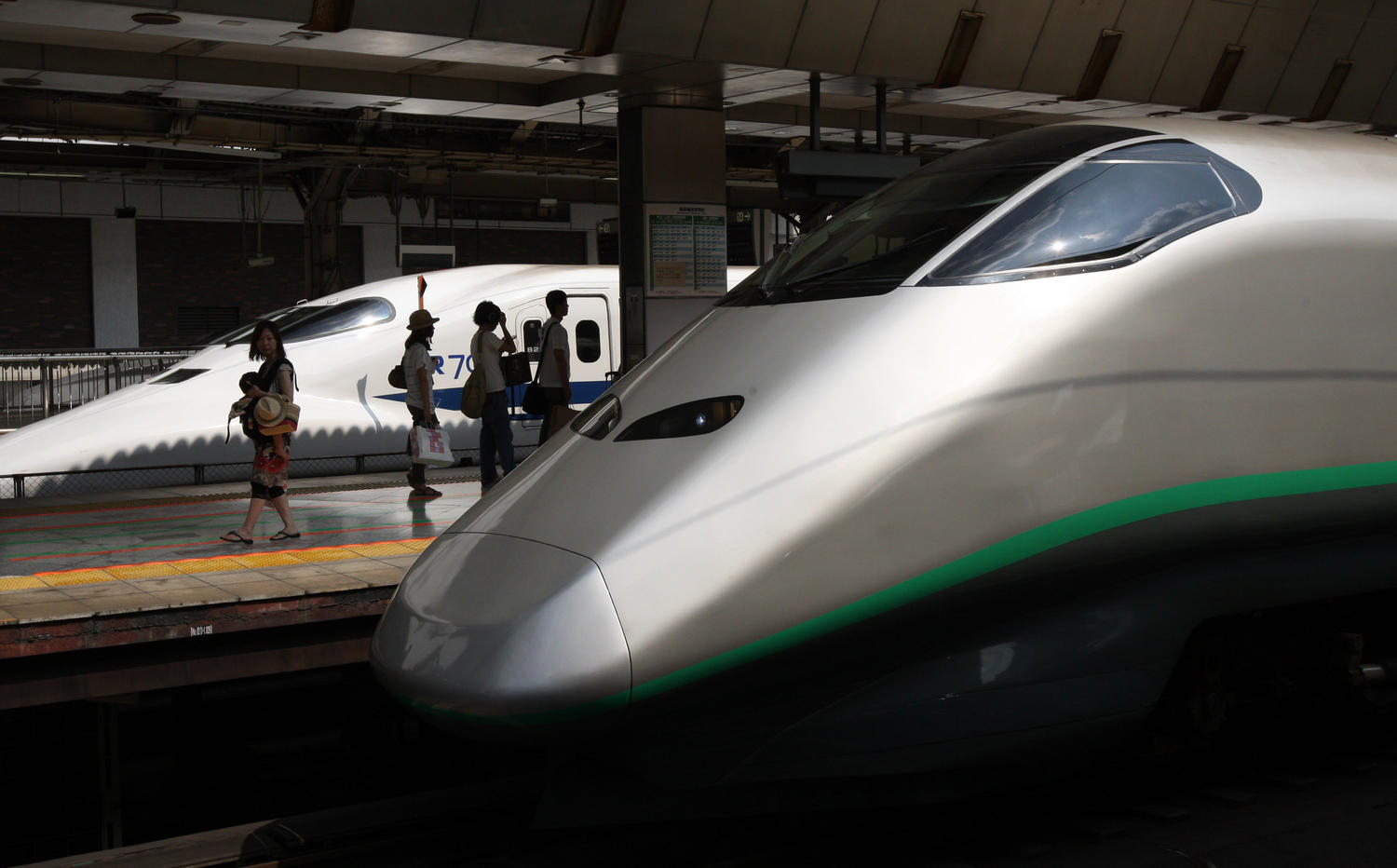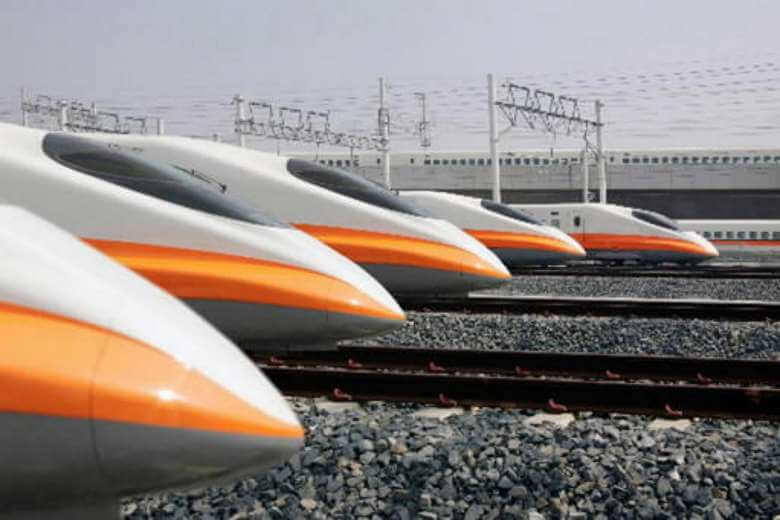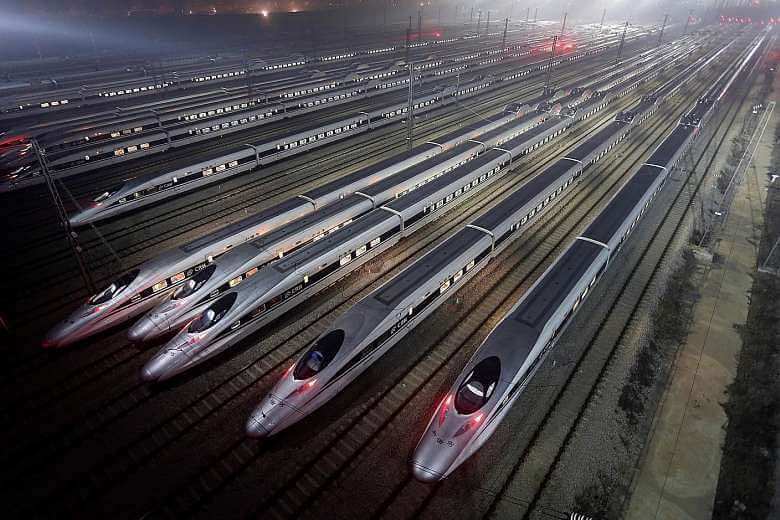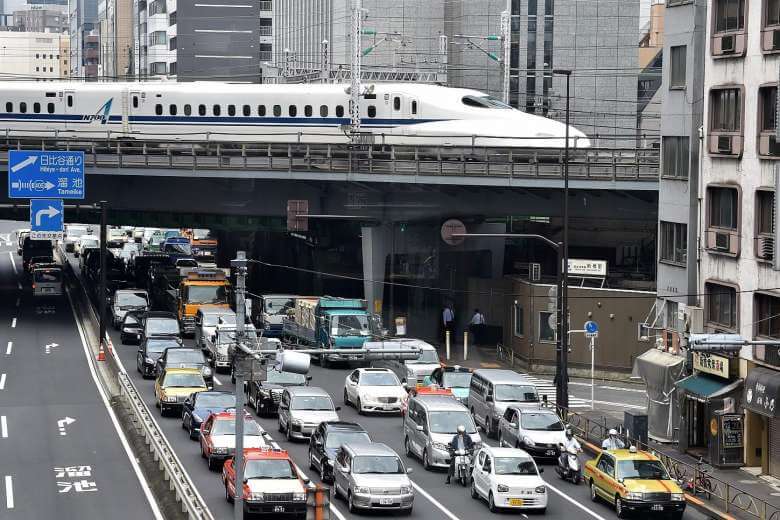Singapore-KL high speed rail: Full speed ahead to real change
High-speed rail links not only foster closer ties between cities, they also revitalise areas around stations
Sign up now: Get ST's newsletters delivered to your inbox

An East Japan Railway Co. Shinkansen bullet train (right) and a Central Japan Railway Co. Shinkansen bullet train sit on the platform of Tokyo Station, in Tokyo, Japan, in 2011.
PHOTO: BLOOMBERG
Janice Heng
Follow topic:
When high-speed trains began running between Tokyo and Osaka 52 years ago, they revolutionised travel between the two Japanese cities.
Since then, high-speed rail links in Europe and East Asia have changed travel patterns and drawn cities closer together.
There are similar expectations for the planned high-speed rail link between Singapore and Kuala Lumpur in Malaysia.
Last week, both governments signed a memorandum of understanding (MOU) on key points of the project, paving the way for further progress in key areas.
Joint tenders will have to be called, numbers crunched and decisions made - from working out details of the alignment of the tracks to financing the project - before the trains start running around 2026.
The benefits will be significant. As Prime Minister Lee Hsien Loong said after the MOU signing in Putrajaya: "It will draw our peoples and our economies together, and we can think of Singapore and KL in the same way as people think of London-Paris, Taipei-Kaohsiung or Tokyo-Osaka."
"Just as you can come down from KL, have lunch in Singapore and go back to KL, so too people can zip up from Singapore to KL comfortably, watch a show, do some business, come back, do some work on the laptop on the train, and be home in time for dinner with the family."
But much work remains to be done, and potential issues could surface along the way.
S. Rajaratnam School of International Studies research fellow Wu Shang-su and Associate Professor Alan Chong say in a commentary that high-speed rail lines such as the Eurostar between London and Paris and Brussels took years to turn a profit.
They point instead to firms in Japan and South Korea, which emphasise urban development around stations as crucial for profitability.
Japan is keen to bid for the Singapore-KL project, and has stressed the safety and reliability of its Shinkansen in its pitches to officials in Singapore and Malaysia.
At the Second High Speed Rail Symposium in Singapore last Friday, East Japan Railway Company executive vice-president Yuji Fukusawa also highlighted his country's focus on "in-station" developments such as connected office towers and underground malls.
With the Singapore terminus to be located in the upcoming Jurong Lake District, there is plenty of potential for developing the area, said Dr Kazuaki Hiraishi, deputy general manager of Mitsubishi Research Institute's policy and public affairs business unit.
Another issue is fare pricing. Dr Wu and Prof Chong note that if the Singapore-KL service charges too much, it might not gain enough passengers; if it charges too little, it may not recoup costs.
"The purchasing power disparities between Singaporean and Malaysian passengers would further complicate the issue," they add.
The Sunday Times looks at how four high-speed rail links have played out elsewhere - from the challenges they faced and, more importantly, the changes that they have wrought.
Taiwan: Bumpy trip to economic boost

The ride was all the more gruelling, stretching beyond eight hours, if the bus was caught in bad traffic.
"By the time I get into the city, I will be so tired and won't really enjoy the show, making the whole trip a waste of time and money," said Ms Cheng, a manufacturing company executive.
China: Heart of 1,000km economic belt

No flight delays due to bad weather, she says. She can also make calls and have access to Wi-Fi on the train, which allows her to work during the journey.
And the stations are located closer to city centres, making it more convenient and cost effective for Ms Ma, an assistant director at a market research firm.
Japan: Shinkansen boasts comfort, zero fatality record

The bullet train, or shinkansen, began service on this route in 1964 and has since expanded to cover most of Japan.
"It was unbelievable how the shinkansen revolutionised travel and made day trips possible," said Mr Izumi, who was travelling to Kyoto for work last Friday.
Eurostar: Long ride to posting operating profits

Part of the complexity comes from the distinction between the Eurostar train service and the tunnel through which it runs.
The high-speed train service connecting London to Paris and Brussels is owned and operated separately from the Channel Tunnel, though the latter had to be built for the trains.

